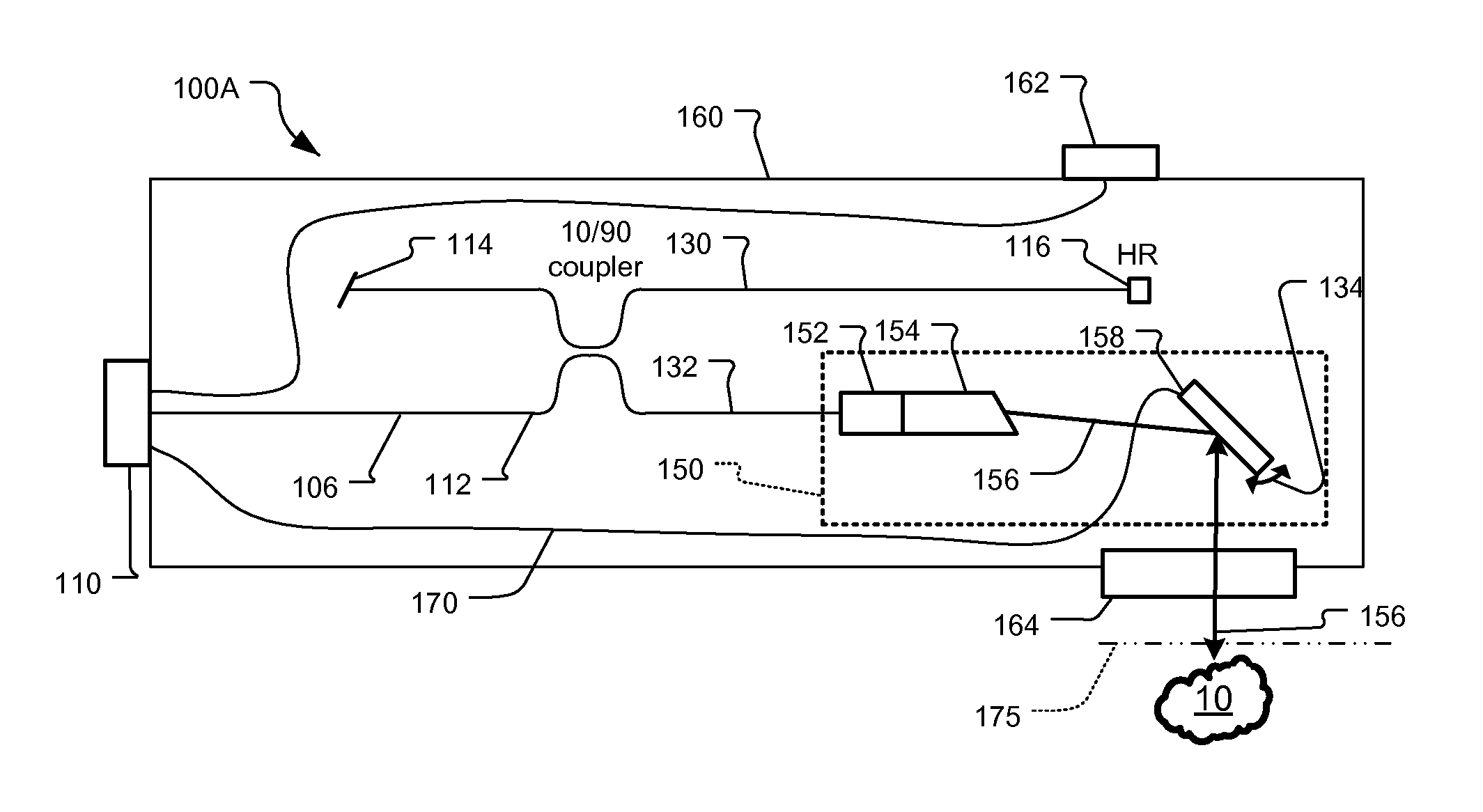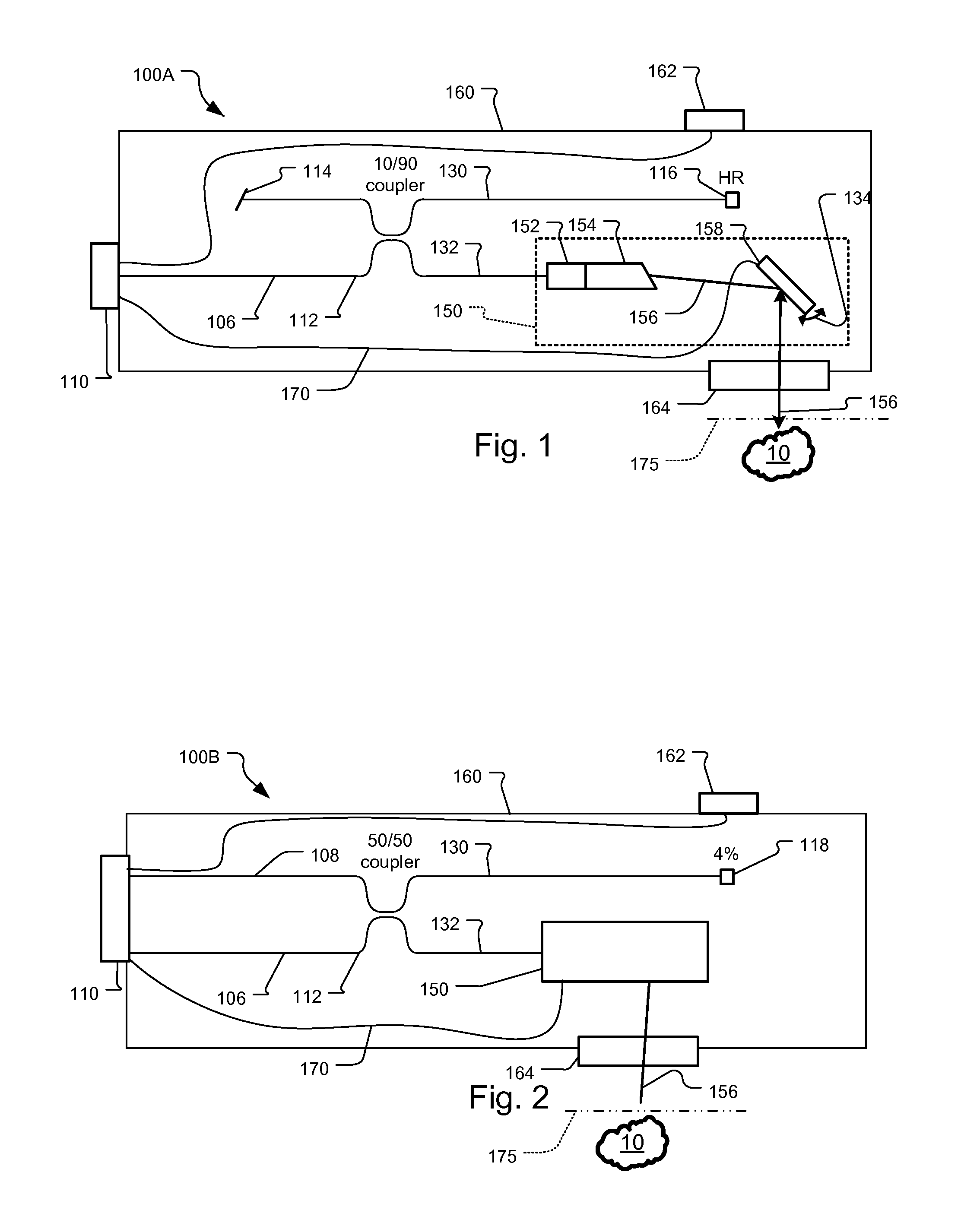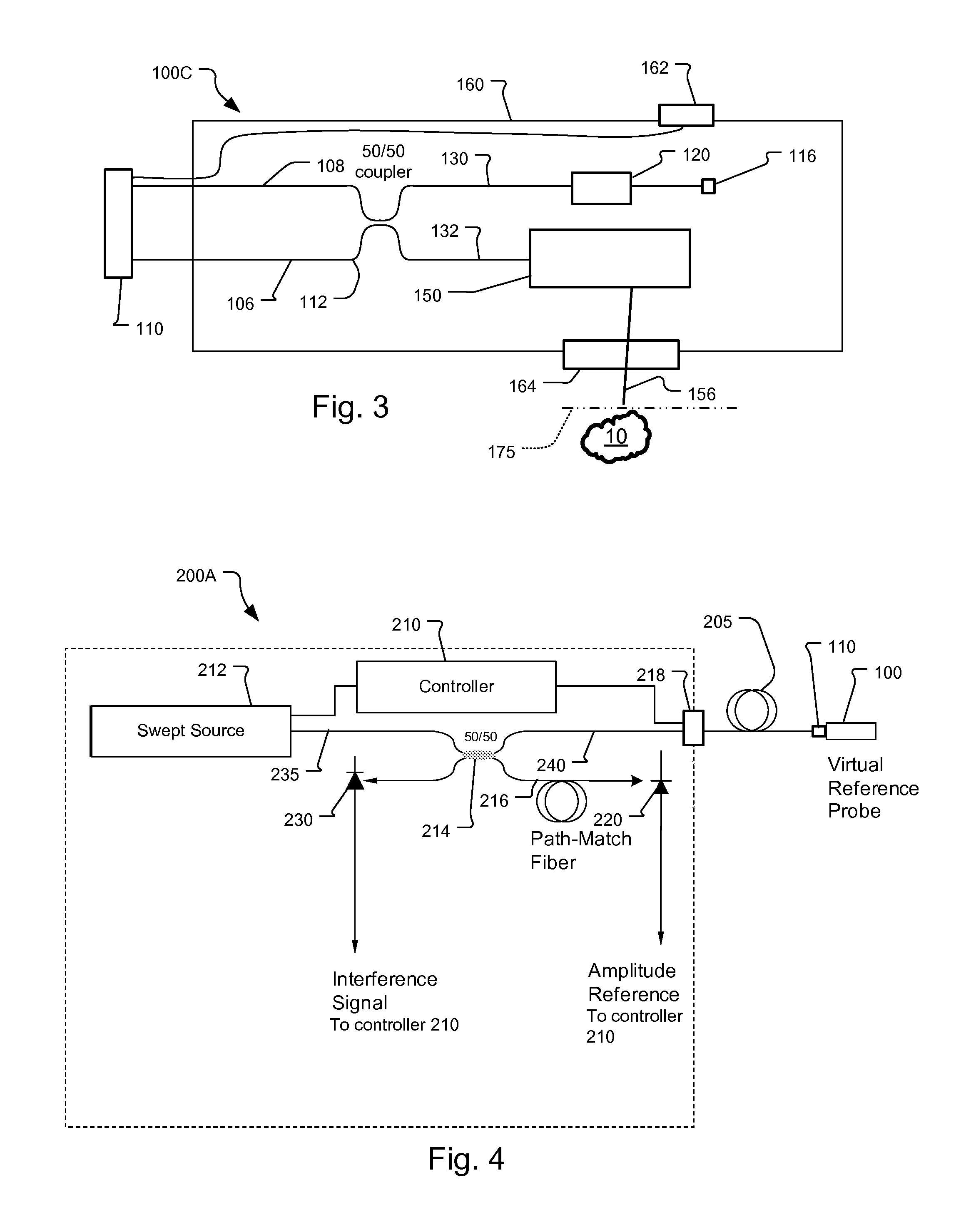OCT Combining Probes and Integrated Systems
a technology of applied in the field of oct combining probes and integrated systems, can solve problems such as birefringence and length change, and achieve the effect of reducing noise and interference, and being easy to integrate into compact handpieces
- Summary
- Abstract
- Description
- Claims
- Application Information
AI Technical Summary
Benefits of technology
Problems solved by technology
Method used
Image
Examples
second embodiment
[0045]FIG. 2 shows the OCT probe 100B. This embodiment is generally similar to the first probe embodiment but uses two OCT / interference signal fibers 106, 108 to optically connect the OCT probe 100 to the OCT analysis system. This probe is compatible with standard balanced receiver / relative intensity noise (RIN) reduction scheme, and would also suppress autocorrelation artifacts from the sample signal interfering with itself.
[0046]In more detail, the OCT signal from the OCT analysis system is received via the electro-optical connector 110 typically through a flexible umbilical on a first OCT / interference signal fiber 106 and a second OCT / interference signal fiber 108, or only one of these fibers.
[0047]The light is then coupled to via a 50 / 50 interference / OCT signal coupler 112 between the reference arm optical fiber 130 and the signal arm optical fiber 132.
[0048]The OCT signal on the reference arm optical fiber is transmitted to a partial reflector 118. In one example, this partial ...
first embodiment
[0082]FIG. 10A shows a swept source polarization sensitive OCT system 200E that is compatible with the polarization sensitive, common path probes of FIGS. 8A and 9. In this embodiment, all of the optical fibers in the system are polarization maintaining.
[0083]In more detail, the swept source laser 212, provides a linearly polarized output aligned to the slow axis of the PM fiber of the system and specifically the PM fiber used for the swept source optical fiber 235. The OCT / amplitude reference fiber coupler 214 is similarly a PM fiber coupler that divides light between the amplitude path match fiber 216 and the OCT probe PM fiber 240. Preferably the OCT / amplitude reference fiber coupler 214 is an unbalanced coupler so that most of the OCT signal is transmitted to the sample, i.e., greater than 90% and preferably 95% or more. The OCT signal light on the OCT probe optical fiber 240 passes through interference signal circulator 242 to be transmitted to the reference probe 100 via the O...
PUM
 Login to View More
Login to View More Abstract
Description
Claims
Application Information
 Login to View More
Login to View More - R&D
- Intellectual Property
- Life Sciences
- Materials
- Tech Scout
- Unparalleled Data Quality
- Higher Quality Content
- 60% Fewer Hallucinations
Browse by: Latest US Patents, China's latest patents, Technical Efficacy Thesaurus, Application Domain, Technology Topic, Popular Technical Reports.
© 2025 PatSnap. All rights reserved.Legal|Privacy policy|Modern Slavery Act Transparency Statement|Sitemap|About US| Contact US: help@patsnap.com



